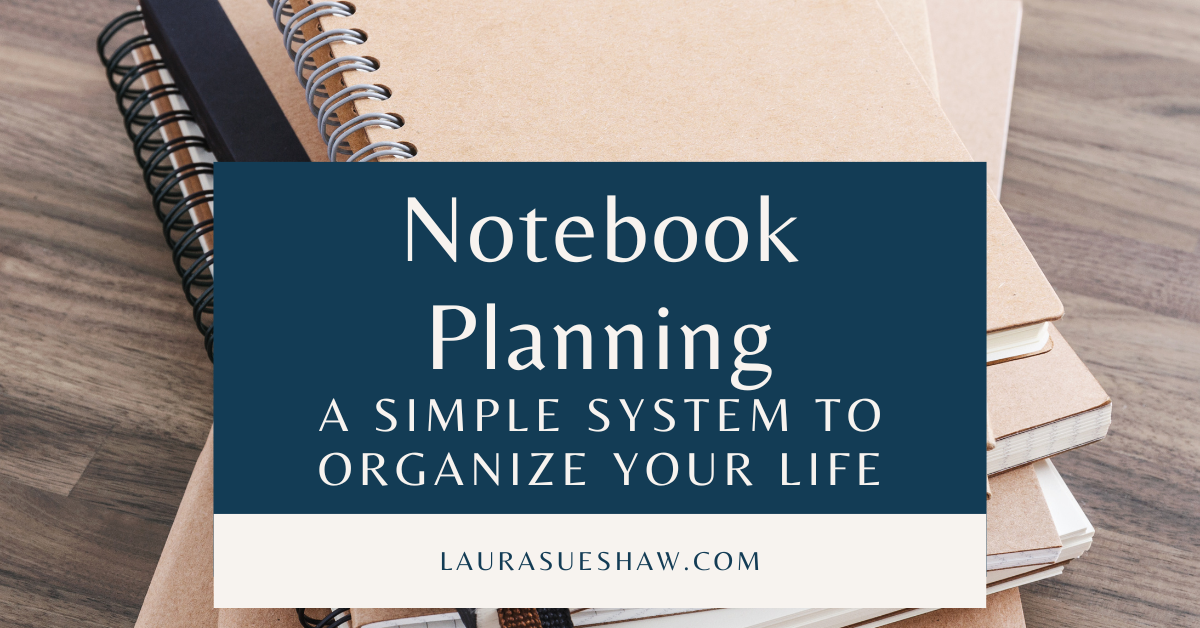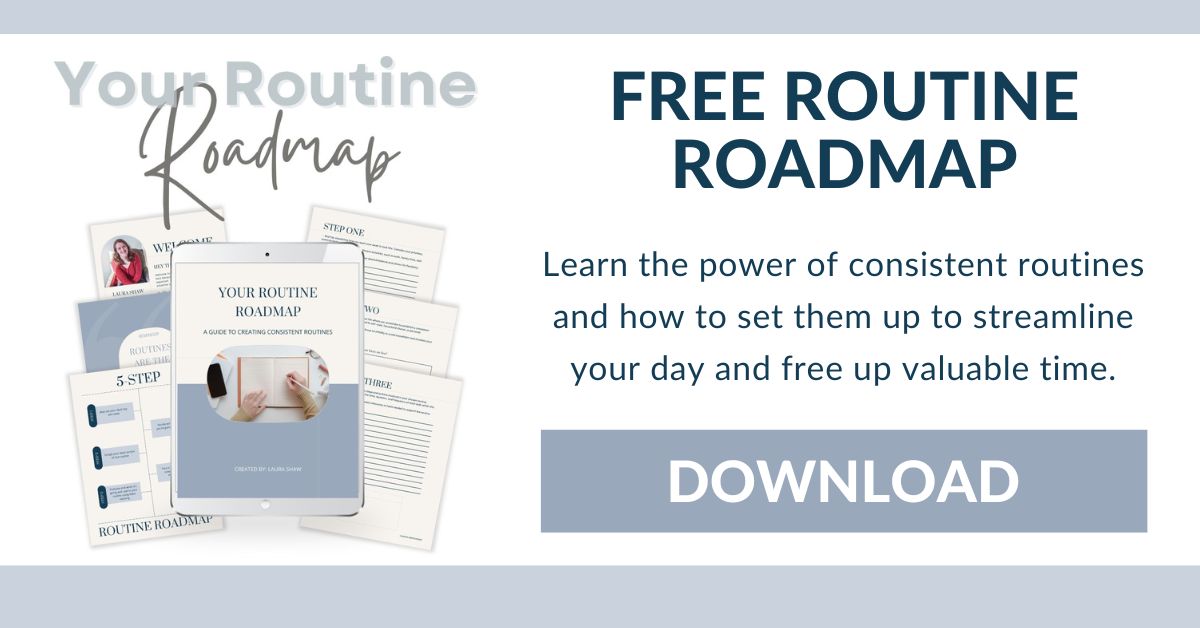You don’t need a fancy planner to get your life in order. In fact, when you’re juggling meals, home, and family life, sometimes simple is exactly what you need. That’s where notebook planning comes in.
If you’re feeling stuck in planner paralysis—or just tired of buying yet another system that doesn’t stick—I want to show you the easy, flexible method I’ve been using for years: planning with a plain notebook.

Why I Ditched Traditional Planners
I’ve tried more planners than I can count. Some were beautiful. Some were effective. But in this season of life—homeschooling three little boys while running a business and managing a home—I need more freedom than a pre-structured layout can offer.
A notebook gives me the space to think, plan, brainstorm, and adjust without any guilt about “doing it wrong.”
My Simple Notebook Planning Process
Here’s how I use a basic notebook to organize my time and reduce my mental load:
1. Monthly Overview
I start with a monthly goals page. This includes anything I want to keep top of mind for the month—personal goals, family projects, work deadlines. It’s not fancy, but it gives me direction.
2. Weekly Breakdown
Each week gets its own spread. I write out the days—Monday through Sunday—then list any events, appointments, or to-dos under each one.
I also include:
-
A menu list with meal ideas
-
Categorized to-do lists, such as:
-
🏡 Home (cleaning, projects, bills)
-
💻 Business (client work and Practical Productivity tasks)
-
This helps me see everything at a glance without trying to cram it all into a tiny planner square.
3. Daily Planning with Flexibility
Each morning (or the night before), I set up my daily page. It usually includes:
-
The date at the top
-
My must-do tasks, separated by category (home, business, etc.)
-
A simple hourly time block down one side of the page (like 6 AM to 8 PM)
This is how I map out my day. It gives me structure, but it’s not rigid. If something changes (which it often does!), I just scratch it out and keep going.
4. Space for Notes and Brain Dumps
One of my favorite things about using a notebook is all the space I have. I use the extra room to jot down ideas and notes, or even reminders to transfer later into my phone or computer.
If I want to save something important, I’ll fold the page corner, use a sticky tab, or snap a photo to digitize it later.
Why It Works for Me (and Might Work for You Too)
Notebook planning works because it adapts to real life. It doesn’t require perfect handwriting, daily consistency, or color-coded tabs. It just needs to work for you—and that’s the entire heart behind Practical Productivity.
I believe productivity should feel doable, flexible, and freeing. And this method gives me the space to plan, pivot, and make progress—without the pressure of perfection.
Ready to Try It?
Grab an old notebook (or treat yourself to a fresh one), and give this method a try. Start simple: a weekly list, a few categories, maybe a daily schedule when you need it.
No rules. No overwhelm. Just a way to make your life feel a little more manageable.
Let me know in the comments—do you use a planner or a notebook? What works for you?


